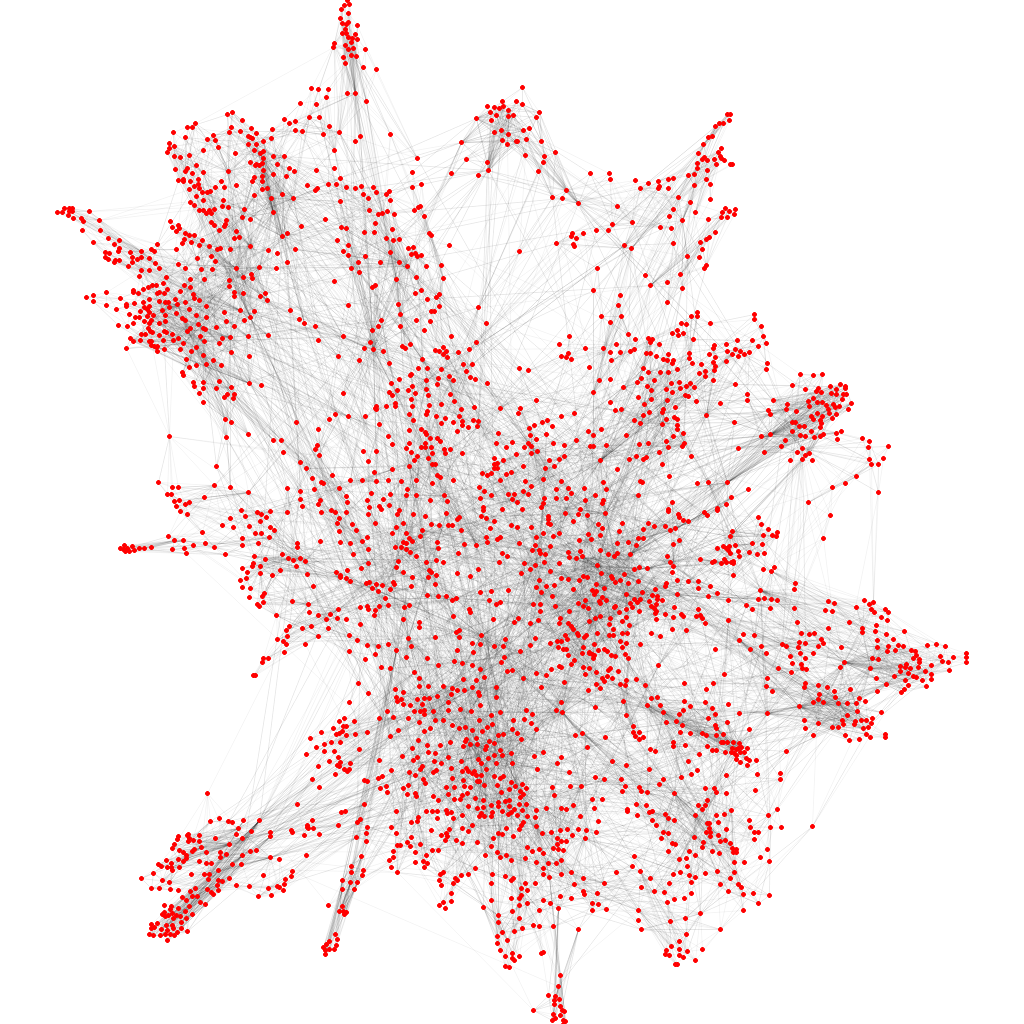# ForceAtlas2 Python bindings from Rust
Python 3 bindings for Rust [forceatlas2](https://framagit.org/ZettaScript/forceatlas2-rs) crate: fast force-based graph spacialization layout, with optional multithread and SIMD.

Note: Cross-compiling with PyO3 is hard, so the distributed binary only works for GNU/Linux with latest versions of glibc (typically not Debian). Any help with cross-compilation or static glibc linking is welcome. :)
# Example
```
import fa2rs
edges = [(0,1), (1,2), (2,0), (2,3)]
layout = fa2rs.Layout.from_graph(edges, fa2rs.Settings(ka=0.1, kg=0.1, kr=0.1), nb_nodes=4)
for i in range(100):
layout.iteration()
print(layout.points)
```
You may need to tweak the settings to fit your data. The most important parameter is the ratio between `ka` and `kr`. If the ratio has too low or high values, the graph will collapse or explode (resulting in zero or infinite values).
* `ka`: attraction coefficient (all neighbor nodes attract each other)
* `kg`: gravity coefficient (all nodes are attracted to the origin) (can be set to `0`)
* `kr`: repulsion coefficient (all nodes repulse each other)
* `chunk_size`: decrease to use more threads, increase to use fewer threads. Tune it to minimize both thread management time and unparallelized time. Set to `None` to disable parallelization.
# Build & install
Build:
sh build_wheel.sh
Install:
pip3 install target/wheel/dist/fa2rs-0.2.1-py3-none-any.whl --upgrade
More information about optimizations on [the Rust repository](https://framagit.org/ZettaScript/forceatlas2-rs).
`Layout` and `Settings` are aliases for `Layout32` and `Settings32`. The `32` and `64` versions refer to the size of the floats. 64-bit floats are more precise, but when SIMD is available, the layout is approximately twice slower than with 32-bit floats.
SIMD is only available on `x86` and `x86_64` with `avx2` feature. (check with `grep avx2 /proc/cpuinfo`)
## License
GNU AGPL v3, CopyLeft 2020-2021 Pascal Engélibert
The ForceAtlas2 paper was released under CC BY, Copyright 2014 Jacomy et al.
This program is free software: you can redistribute it and/or modify it under the terms of the GNU Affero General Public License as published by the Free Software Foundation, version 3 of the License.
This program is distributed in the hope that it will be useful, but WITHOUT ANY WARRANTY; without even the implied warranty of MERCHANTABILITY or FITNESS FOR A PARTICULAR PURPOSE. See the GNU Affero General Public License for more details.
You should have received a copy of the GNU Affero General Public License along with this program. If not, see https://www.gnu.org/licenses/.




